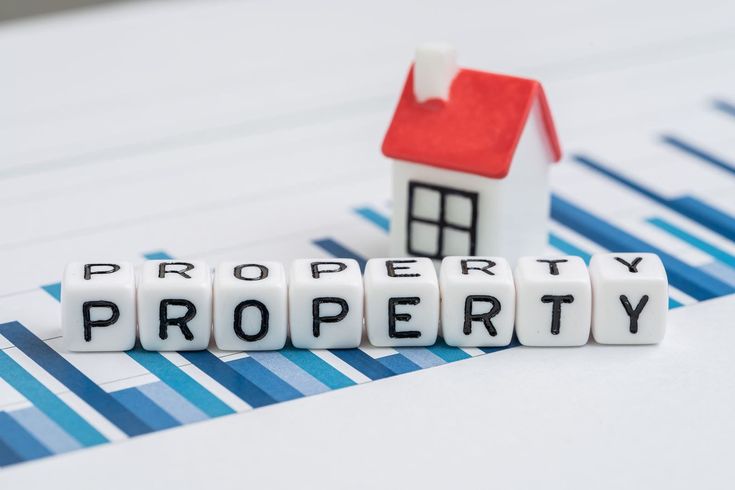
How Can You Calculate and Maximize ROI in Real Estate Investments?
Real estate is one of the most popular investment vehicles due to its potential for stable income and long-term appreciation. However, the key to success lies in understanding how to calculate and maximize Return on Investment (ROI). Whether you’re investing in residential, commercial, or industrial properties, knowing how to evaluate ROI helps you make informed decisions and optimize profitability.
This comprehensive guide will walk you through the methods for calculating ROI, advanced metrics for deeper analysis, and actionable strategies for maximizing returns on your real estate investments.
Understanding ROI in Real Estate
ROI is a crucial metric for evaluating the profitability of any investment, including real estate. In simple terms, it measures how much money you make on your investment relative to the amount you put in. For real estate investors, ROI provides insights into a property’s efficiency, helping them assess whether it’s a worthwhile investment.
The Basic ROI Formula
The most straightforward way to calculate ROI is as follows:
ROI=(Net ProfitTotal Investment Cost)×100\text{ROI} = \left( \frac{\text{Net Profit}}{\text{Total Investment Cost}} \right) \times 100ROI=(Total Investment CostNet Profit)×100
Where:
- Net Profit = Total Revenue – Total Expenses
- Total Investment Cost = Purchase Price + Additional Costs (repairs, closing fees, etc.)
Example Calculation
Let’s say you buy a rental property for $200,000. You spend an additional $20,000 on renovations and $5,000 on closing costs, making your total investment $225,000. The property generates an annual rental income of $24,000, and your yearly expenses (maintenance, property taxes, and insurance) total $9,000. Your net Profit would be $15,000.
ROI=($15,000$225,000)×100=6.67%\text{ROI} = \left( \frac{\$15,000}{\$225,000} \right) \times 100 = 6.67\%ROI=($225,000$15,000)×100=6.67%
This percentage indicates the annual return you’re getting on your total investment cost.
Advanced ROI Metrics for Deeper Analysis
While the basic ROI formula provides a good starting point, real estate investors often rely on additional metrics to gain a more comprehensive understanding.
Cash-on-Cash Return
This metric evaluates the return on actual cash invested, excluding financing. It’s especially useful for properties purchased with loans.
Cash-on-Cash Return=(Annual Pre-Tax Cash FlowTotal Cash Invested)×100\text{Cash-on-Cash Return} = \left( \frac{\text{Annual Pre-Tax Cash Flow}}{\text{Total Cash Invested}} \right) \times 100Cash-on-Cash Return=(Total Cash InvestedAnnual Pre-Tax Cash Flow)×100
For example, if you invested $50,000 in cash and the property provides an annual pre-tax cash flow of $10,000:
Cash-on-Cash Return=($10,000$50,000)×100=20%\text{Cash-on-Cash Return} = \left( \frac{\$10,000}{\$50,000} \right) \times 100 = 20\%Cash-on-Cash Return=($50,000$10,000)×100=20%
Cap Rate (Capitalization Rate)
The cap rate is a widely used metric to estimate the potential return of an investment property, irrespective of financing.
Cap Rate=(Net Operating Income (NOI)Property Value)×100\text{Cap Rate} = \left( \frac{\text{Net Operating Income (NOI)}}{\text{Property Value}} \right) \times 100Cap Rate=(Property ValueNet Operating Income (NOI))×100
NOI is the income generated from the property after deducting operating expenses. For example, if a property generates $50,000 in NOI and is worth $500,000:
Cap Rate=($50,000$500,000)×100=10%\text{Cap Rate} = \left( \frac{\$50,000}{\$500,000} \right) \times 100 = 10% Cap Rate=($500,000$50,000)×100=10%
A higher cap rate indicates a potentially higher return but often comes with greater risk.
Internal Rate of Return (IRR)
IRR measures the annualized rate of return on investment, considering the time value of money. It’s particularly helpful for assessing long-term projects where cash flows vary over time. IRR provides a more dynamic view of profitability compared to static metrics like ROI and cap rate.
Strategies to Maximize ROI in Real Estate
Maximizing ROI involves a combination of strategic planning, operational efficiency, and market awareness. Here are some actionable strategies to boost your returns:
Thorough Market Research
Understanding the local market is the foundation of any successful real estate investment. Look for areas with:
- High Demand: Properties in neighborhoods with growing populations, job opportunities, and good schools often have higher rental demand.
- Potential for Appreciation: Research historical data and future projections to identify areas where property values are likely to rise.
- Favorable Regulations: Ensure the location has investor-friendly policies, such as lenient rental regulations and tax incentives.
Add Value to the Property
Investing in improvements can significantly increase both rental income and property value. Examples include:
- Renovations: Upgrading kitchens, bathrooms, and flooring can attract higher-paying tenants.
- Energy Efficiency: Installing solar panels or energy-efficient appliances reduces utility costs and appeals to eco-conscious renters.
- Additional Amenities: Adding features like parking spaces, storage units, or in-unit laundry can boost rental income.
Optimize Rental Pricing
Pricing your rental competitively is key to maintaining high occupancy rates and maximizing income. Use tools like:
- Dynamic Pricing: Platforms such as Airbnb offer dynamic pricing tools that adjust rates based on demand, seasonality, and local events.
- Comparable Market Analysis: Regularly review rental prices of similar properties in your area to ensure your rates are competitive.
Implement Efficient Property Management
Effective property management can reduce costs and improve tenant retention. Consider:
- Hiring Professionals: A property management company can handle tenant screening, rent collection, and maintenance, ensuring smooth operations.
- Automating Processes: Use software to streamline tasks like lease management, maintenance requests, and accounting.
- Regular Maintenance: Proactive upkeep prevents costly repairs and keeps tenants satisfied.
Leverage Financing Wisely
Using leverage (borrowed money) can amplify your returns, but it must be managed carefully. Key considerations include:
- Interest Rates: Shop around for the best mortgage rates to minimize financing costs.
- Debt Service Coverage Ratio (DSCR): Ensure your property’s income comfortably covers mortgage payments and other expenses.
Tax Strategies
Understanding and leveraging tax benefits can significantly impact ROI. Some key strategies include:
- Depreciation: Real estate investors can deduct property depreciation, reducing taxable income.
- 1031 Exchange: This allows you to defer capital gains tax when selling one property and reinvesting the proceeds into another.
- Deductions: Operating expenses like maintenance, property management fees, and mortgage interest are often tax-deductible.
Risk Assessment and Mitigation
Every investment comes with risks, and real estate is no exception. To protect and enhance your ROI, consider the following:
Market Risk
Diversify your portfolio across different locations and property types to mitigate the impact of local economic downturns.
Tenant Risk
Thoroughly screen tenants to minimize the risk of defaults and property damage. Long-term leases with reliable tenants provide more stability.
Operational Risk
Maintain adequate insurance coverage and establish a reserve fund for unexpected expenses like major repairs or legal disputes.
Continuous Performance Monitoring
Regularly assessing your investment’s performance helps identify areas for improvement. Key metrics to track include:
- Occupancy Rates: High occupancy rates indicate steady income, while frequent vacancies may signal pricing or management issues.
- Net Operating Income (NOI): Monitoring NOI provides a clear view of your property’s profitability.
- Appreciation: Periodically reassess property value to understand long-term ROI, especially if considering refinancing or selling.
Conclusion
Calculating and maximizing ROI in real estate investments requires a blend of analytical skills, strategic decision-making, and ongoing management. By understanding key metrics like ROI, cap rate, and IRR and implementing strategies such as market research, value-add improvements, and efficient property management, you can optimize your returns and build a profitable real estate portfolio. With careful planning and execution, real estate can be a cornerstone of long-term wealth creation.




